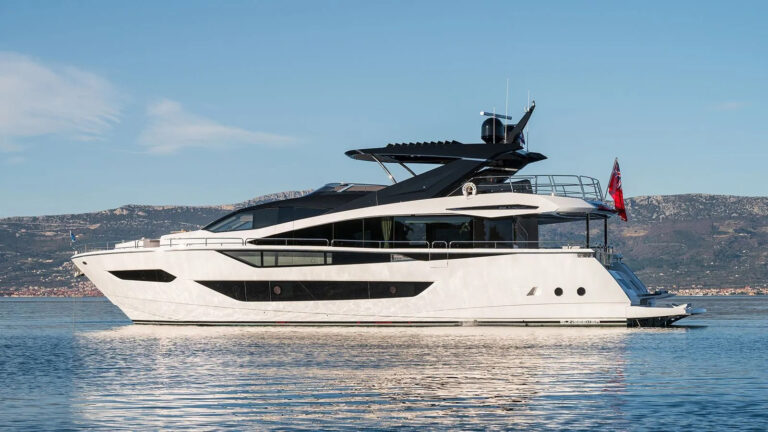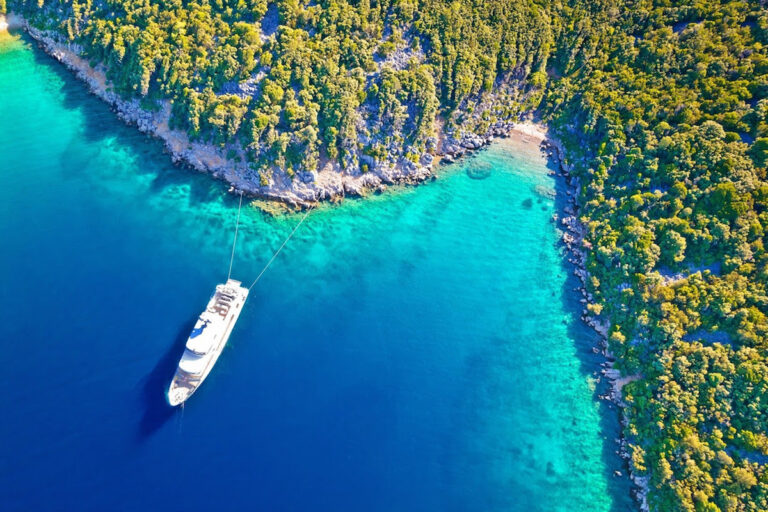
As technology has improved in the past decade, stabilizers have become one of the most sought-after systems on motoryachts and larger sailboats. Beyond physical comfort, fin stabilizers’ benefits include a reduced risk of accidents caused by unexpected boat roll, as well as greater boat use in weather conditions that otherwise would have caused seasick guests to stay at home. While some systems can reduce roll by up to 95 percent, not all stabilizers are created equal.
“Stabilization is thrown around as a generic concept, but performance varies depending on the system,” says Phillip Whittaker, large-yacht specialist at IMTRA Corp. “Gyroscope systems are good at stabilizing a boat at zero speed, but as the boat moves faster, the effectiveness declines.”
Norway-based Side-Power has been building top-grade marine equipment since 1908, and has become the world leader in complete fin-stabilizer and thruster systems. IMTRA has partnered with the Norwegian company since the early 1990s with its thruster lines. Recognizing innovation, IMTRA three years ago introduced Side-Power’s fin stabilizers to the U.S. market. The exterior fins, controlled by in-hull actuators, take up much less interior space than bulkier internal gyroscopic systems. Vibration levels also tend to be significantly lower.
In 2013, Side-Power engineered a revolution in fin stabilizers with its Vector Fin, which won the DAME Innovation Award. Compared to other fin systems, the Vector design cuts roll reduction by half at anchor and a third at cruising speeds. The patent-pending design incorporates a curved fin that redirects the force needed for stabilization more efficiently, while reducing the “slew” effect. The Vector Fin is also a one-piece molded design, with a vinylester cover above high-density core material. Most fins are made in halves and glued together.
“These Vector Fins are ideal for faster, lighter-weight motoryachts under 70 feet,” says Whittaker. “They have a lot more roll stabilization per fin size compared to other fins. That means drag, power consumption, and load on mechanical parts are a lot less than other fins that provide similar roll reduction.”
The Vector Fin also delivers excellent stabilization in the “dead spot” of 3 to 5 knots, where most stabilizers have minimal impact. “Typically there’s not enough water flow for stability, but the Vector’s algorithms increase the amount of force needed at those low speeds,” says Whittaker.
IMTRA has also seen many boats become faster with the Vectors. “The fins create lift and thereby negate drag,” says Whittaker. “We can’t guarantee this on all boats, but in extreme cases we’re seeing improved top speeds of 2 to 4 knots.” On engine-pod designs, the company has witnessed improved turning performance, with much less heeling during tight, high-speed turns.
Of course, any boat stabilizer is only as good as the electronics that control it. Side-Power’s multiple digital sensors monitor the movement of the vessel, with the CAN Bus-based communication system providing a faster reaction time. Side-Power systems can also be easily upgraded in the field without replacing hardware. IMTRA says that most Side-Power clients own boats from 50 to 135 feet, though it has fitted stabilizers above and below that range. The company takes great care in understanding exactly how an owner uses the boat. “We find out whether it’s running offshore at 20 knots most of the time, or anchoring in a bumpy, secluded cove,” says Whittaker. “Every install is unique, so we only recommend the system that delivers the best results. Making its thruster and stabilizer systems as efficient as possible has been Side-Power’s primary goal since the company started. We’re very much in tune with that philosophy.”
For more information click here.









